GST Registration Checklist 2025-Free Download
Why This GST Registration Checklist Matters
Getting GST registration right the first time can save weeks of delay and countless clarifications. Many taxpayers face avoidable notices simply because of missing or mismatched documents. To make compliance simple, we’ve created a free downloadable GST Registration Checklist).
This practical GST registration guide tells you exactly which proofs apply if your premises are owned, rented, or residential, and lists the supporting KYC and bank documents needed. Each point is backed by official CBIC, GST Council, and GSTN references.
On this page, you’ll find:
– A quick guide to eligibility rules
– The main documents required for GST registration
– A summary of the portal steps (REG-01 → REG-06)
– The link to download the Word checklist file (free)
Who Needs GST Registration?
Not everyone needs to register under GST. You become liable if:
– ₹20 lakh turnover – Most States/UTs
– ₹10 lakh turnover – Special category States: Manipur, Mizoram, Nagaland, Tripura
– ₹40 lakh turnover (goods only) – If your State has opted for the higher threshold (services remain at ₹20/₹10 lakh)
– Compulsory cases (Section 24): Inter-State taxable supply, RCM, non-resident/casual taxable persons, e-commerce operators, TDS/TCS deductors, ISDs
– Not required: Agriculturists (own produce) and those making only exempt/non-taxable supplies
Key Documents Required for GST Registration
The exact proofs depend on your premises and business type.
1. Identity & Constitution
– PAN of entity and authorised signatory
– Photographs of proprietor/partners/directors
– Partnership Deed / LLP Agreement / Certificate of Incorporation (+ MOA/AOA for companies)
– Board Resolution or Authorisation letter
2. Proof of Principal Place of Business
– Owned: Any one – Property tax receipt / Municipal khata / Latest electricity bill
– Rented/Leased: Rent/lease agreement + utility bill (sometimes also owner’s property proof)
– Residential (used for business): NOC from owner + utility bill (+ agreement if available)
3. Bank Proof
– Cancelled cheque with pre-printed name, or
– First page of passbook, or
– Bank certificate on letterhead
4. Other Supporting Docs
– Aadhaar & PAN of authorised signatory (for Aadhaar e-KYC)
– Details of additional places of business
– HSN/SAC codes for goods/services supplied
Small Steps of GST Registration
Even with documents ready, it’s important to know the flow on the GST portal:
1. Start at GST Portal → New Registration.
2. Part A (REG-01): Enter PAN, mobile, email → verify OTP → generate TRN.
3. Part B (REG-01): Fill in business details, places, bank, HSN/SAC; upload documents.
4. Aadhaar Authentication: Complete OTP e-KYC; if flagged → biometric/physical verification.
5. Verification (Rule 9): Officer checks application. Approval in 7 working days if complete; otherwise REG-03 issued → reply with REG-04.
6. Approval: Download GST Registration Certificate (REG-06) from your dashboard.
7. After approval: Update bank details within 30 days (Rule 10A), set invoice series, enable e-Way Bill/e-Invoice if applicable.

Why Download This Checklist?
– One-page clarity: Shows exactly which proofs apply for owned, rented, or residential premises.
– Time-saving: Avoid REG-03 clarifications and rejections.
– Trustworthy: References CBIC, GST Council, GSTN.
– Practical format: Word file you can print, share, or use for client onboarding.
Download the Free Checklist
👉 [Download GST Registration Documents Checklist
GST Registration Checklist – FAQs
Q1. Who needs GST registration in 2025?
Any business whose aggregate turnover crosses ₹20 lakh (most States) or ₹10 lakh (Manipur, Mizoram, Nagaland, Tripura) must register. For exclusive suppliers of goods, some States allow a higher limit of ₹40 lakh. Certain categories (e.g., inter-State suppliers, e-commerce operators) require compulsory registration regardless of turnover.
Q2. Which documents are required for proof of address?
– Owned premises: One proof (property tax receipt / municipal khata / electricity bill).
– Rented/leased premises: Rent agreement + utility bill (sometimes owner’s property proof too).
– Residential premises: NOC from owner + utility bill (+ agreement if available).
Q3. How do I apply for GST registration?
Apply online at the GST Portal. Fill REG-01 (Part A → TRN, Part B → details + documents), complete Aadhaar e-KYC, and submit. If approved, you’ll receive your GST Registration Certificate (REG-06) within 7 working days.
Q4. What happens if my GST application is rejected?
If you receive a notice (REG-03), reply using REG-04 with proper documents. If rejected, you can file a fresh application or appeal before the Appellate Authority (Section 107, Form APL-01).
Disclaimer
This article is general guidance. GST law evolves via notifications, circulars and court rulings. Always verify with the bare provisions and official notifications linked above and apply them to your facts (State-wise adoption of the ₹40 lakh goods-only option varies). For litigation, consult a professional and review the latest departmental instructions and judgments.
Related Reading
Official Sources
• CBIC – CGST Act (Sections 22, 23, 24, 29, 30): https://taxinformation.cbic.gov.in/
• CBIC – CGST Rules (Rules 8, 9, 10A, 10B, 21A, 22, 23, 25): https://taxinformation.cbic.gov.in/
• GST Council Notifications (10/2019-Central Tax, 10/2017-IGST): https://gstcouncil.gov.in/
• GSTN Portal Guide – Apply for Registration: https://tutorial.gst.gov.in/userguide/registration/Apply_for_Registration_Normal_Taxpayer.htm






